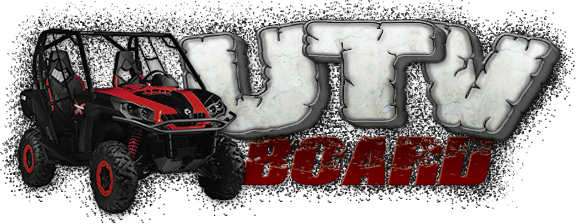By
Hunterman22
2021 Hisun Axis 500 UTV (From Lowes)
Will NOT START
MY apologies if this is to much info just wanted to give yal the most information possible for help.
I'm a so called diyer. An Electrician by trade 21yrs. I got my S×S from my last job. The contractor purchased this S×S for this specific job brand new, from Lowes. They used it for hauling materials, tools, & a little bit of anything you can think of on an Industrial type job site.
I remember getting on the SxS one time & pushed the gas petal all the way to the floor & SxS had very little power.
So anyway ,when the job finished up back mid July this year (7/2024) , I asked the contractor what they was going to do with it. I was told to take it. Otherwise it would go to the contractors yard (storage yard) & most likely rust away.
Took it home washed it , it had a heavy coat of dust on it & in it dust was every where. My helper & I had to push it on the trailer to get it home. After washing it throughly I let it sit & dry out for a good day and half, maybe 2 days. Before trying to start it. NO START. Will turn over & try to start but thats it.
So here's what I've purchased & installed. New Air Filter, new spark plug, new air idle control valve (AICV), new throttle position sensor, new throttle body, new oxygen sensor, new digital dash speedometer/fuel gauge/clock.
Also drained the old oil & gas & replaced with new oil & 93oct. gas. I should probably mention that I've changed the AICV twice. The 1st time I changed the AICV I was able to get the SxS started & let idle for at least 10-15min. Drove out of the garage, with very little power, turned it around & barely got it back in the garage.That was the one & only time I've been able to start the SxS. I've also cleaned the Throttle Body and & intake with TB cleaner. So after that the AICV was making weird noise so I pulled it out & tried cleaning it, pretty sure I messed it up. So I purchased a Throttle Body that came with new AICV & TPS. Still NO START. I've checked the fuel pump & the fuel injector. I took the injector off still hooked up to wiring & turned the key over, the injector sprayed a lot of gas out kinda the size of a volleyball. I've also checked the clearance gap on the intake & exhaust valve. But today 11/2/2024 I'm going recheck spark plug gap & the valve gaps. And alot of other checking. Would the driver side seat belt have anything to do with it not starting?? I know the driver side seat belt has to be in gauged for full throttle "going fast". Thing is the drv. side seat belt will latch but feels like might be messed up inside of it. Tired opening it up but to no avail. I've never had a S×S or 4wheeler so I was really excited when I got the S×S,not so much anymore. I work on & fix my own vehicles usually no problems. But this SxS is kicking my ass.
So if possible & someone could help me with some ideas or tell me what Im doing wrong or did wrong, I would greatly appreciate it. Thank you for reading thus far.







Recommended Posts
Join the conversation
You can post now and register later. If you have an account, sign in now to post with your account.
Note: Your post will require moderator approval before it will be visible.